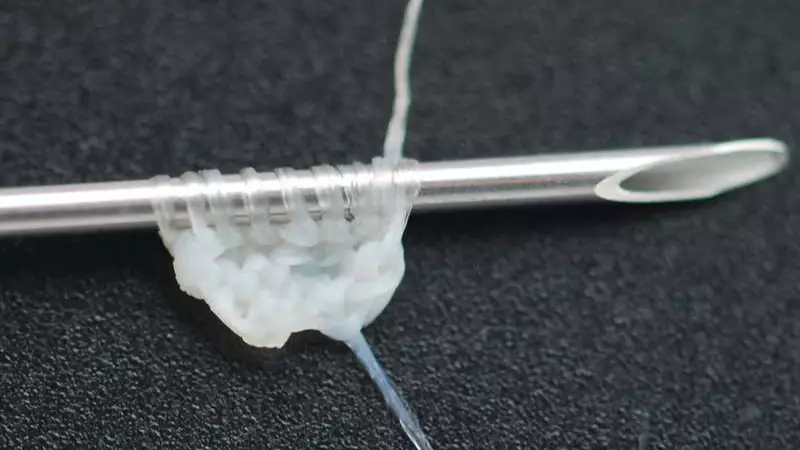
A group of scientists have created a form of 'yarn' which is made out of woven human skin cells.
If that wasn't enough to make you feel a bit uncomfortable, it's been called a 'human textile'.
Although it might seem a bit gross, the new find could be a true breakthrough for surgeons - normal skin or tissue grafts do carry a risk, with some patients having an immune response triggered by that type of procedure.
Advert
If surgeons are able to use human cells to sew them up, there is much less chance of them having a reaction.
The team from the French National Institute of Health and Medical Research in Bordeaux explained in a new study: "These human textiles offer a unique level of bio-compatibility and represent a new generation of completely biological tissue-engineered products."

If you really want to know how they make them, read on. If you're squeamish, I'd think twice.
Advert
In order to create the thread, the team cut sheets of human skin cells into long strips, then weaving them together into a yarn. With it being skin, it's flexible enough to be used in loads of ways.
Speaking to New Scientist, lead researcher Nicholas L'Heureux said: "We can sew pouches, create tubes, valves and perforated membranes.
"With the yarn, any textile approach is feasible: knitting, braiding, weaving, even crocheting."
The new 'human texture' needs to be tested on people yet, but researchers have done some tests on rats.

When they stitched together the wounds of a rat its skin healed up over two weeks. They say it's been used to create a skin graft for the artery of a sheep - the operation worked and the leaking artery was healed.
Advert
The team are hoping they will be able to use the same techinques on humans in the future.
The paper continued: "By combining this truly 'bio' material with a textile-based assembly, this original tissue engineering approach is highly versatile and can produce a variety of strong human textiles that can be readily integrated in the body."
Featured Image Credit: Magnan et al., Acta Biomater / Elsevier (2020)